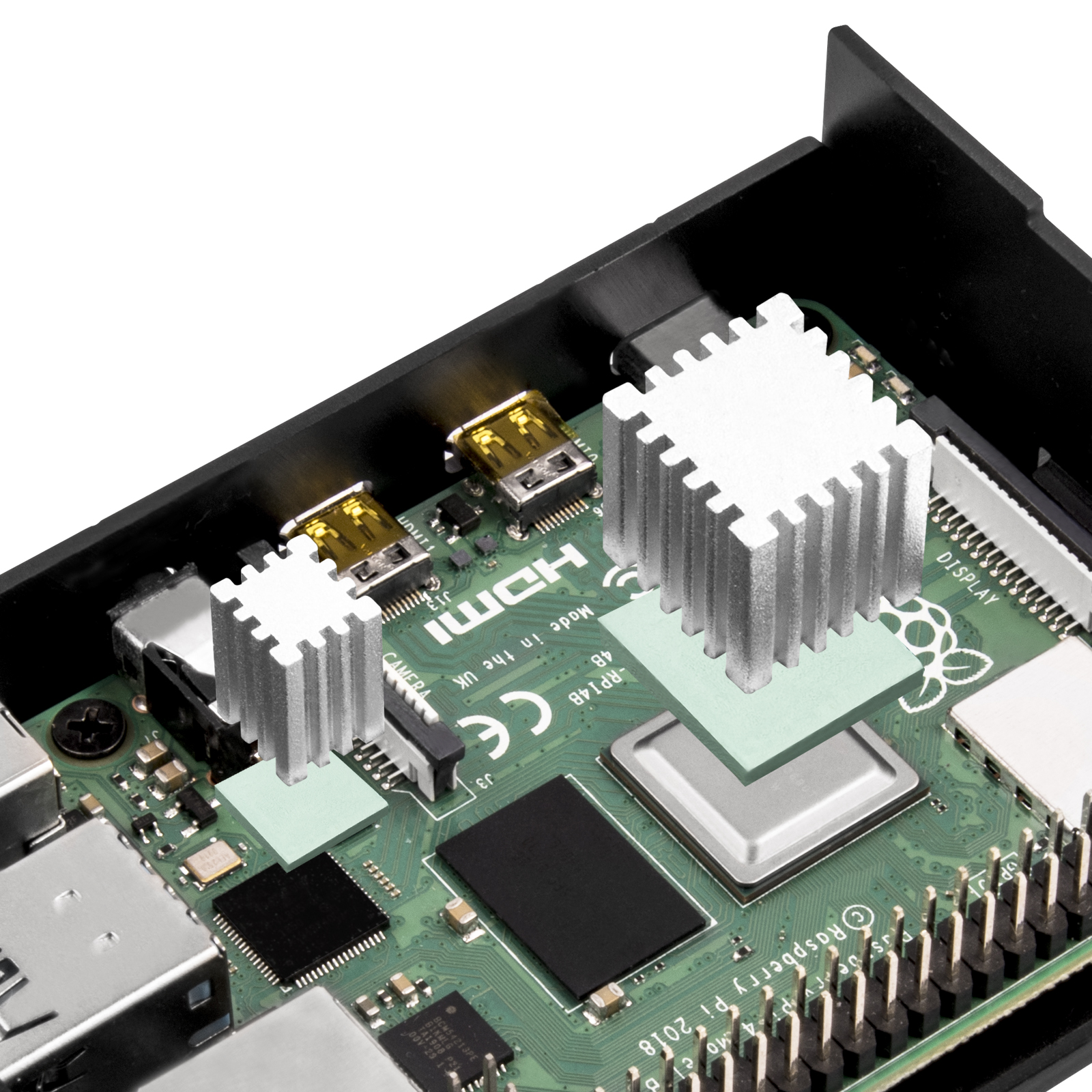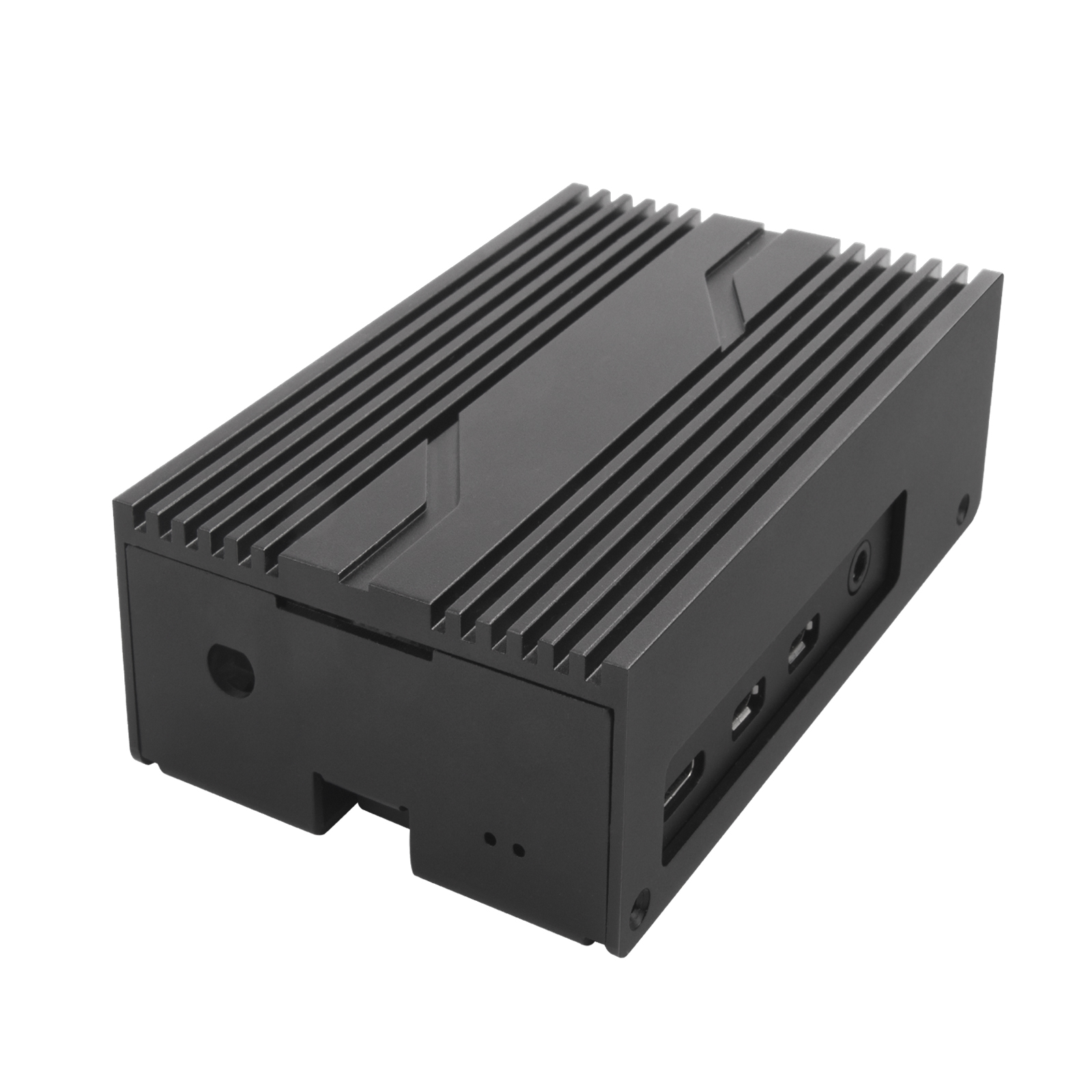SilverStone Launches Aluminum Case For Raspberry Pi 4
Cool and silent.
SilverStone, makers of PC cases have made something a little smaller for their latest product. The SST-PI02B is an all aluminium case made for the Raspberry Pi 4. This passively cooled case claims to drop temperatures by around 14 degrees Celsius using two heatsinks, one for the CPU and the other for the RAM. The aluminium case provides additional heat dissipation using a series of fins which maximise the surface area available for cooling.

All of the USB, micro HDMI, Ethernet ports present on the Pi 4 have an appropriate cut out on the case including the GPIO which has a slot on the rear side of the case. This case does not work with Raspberry Pi add on boards, “HATs”, but breakout ribbon cables can be used to provide a connection to the GPIO.

An intriguing addition to this case is a pre-drilled point for a WiFi antenna, which is not included in the box. Why is this intriguing? Well the Raspberry Pi 4 does not have a connection for an external antenna. The antenna on a Raspberry Pi 4 is part of the PCB.

This is a great looking case and if the claimed heat dissipation is correct then we have an excellent candidate for a passively cooled home server build.
Get Tom's Hardware's best news and in-depth reviews, straight to your inbox.

Les Pounder is an associate editor at Tom's Hardware. He is a creative technologist and for seven years has created projects to educate and inspire minds both young and old. He has worked with the Raspberry Pi Foundation to write and deliver their teacher training program "Picademy".
-
King_V Had it been available at back in December, I'd've definitely considered this for my Pi4 in lieu of the Flirc case, though thus far, I have ZERO complaints about the Flirc.Reply -
King_V Hmm, good question. I'd assumed so given the pictures, but now I'm not 100% sure. If those heatsinks DIDN'T touch the top cover, I don't see how they could get the temperature reductions they claim.Reply -
DaTilles If the heatsinks don't touch the top part of the case, it would be sensless. Anyways, in the picture, the second heatsink is located on the usb controller, not the ram. The ram is the bigger Chip next to the cpu, or not?Reply -
deesider Reply
The Flirc case appears to be an all encompassing aluminium shell with soft touch panels on top.King_V said:Had it been available at back in December, I'd've definitely considered this for my Pi4 in lieu of the Flirc case, though thus far, I have ZERO complaints about the Flirc.
How much is the wifi functionality affected? -
King_V Replydeesider said:The Flirc case appears to be an all encompassing aluminium shell with soft touch panels on top.
How much is the wifi functionality affected?
By the Flirc case? I couldn't say - I'm using wired ethernet on it. -
CooliPi The picture shows small heatsinks on the top of a BCM chipset and USB bridge, NOT ram. RAM is not power hungry. USB bridge can thermally throttle and stall data transfers if it's too hot.Reply
If the heatsinks aren't connected to the case, they're barely helpful. The FLIRC case has it connected (it's just a protruding column of the case material - however no direct cooling for the USB bridge), so I assume it'd be better than this.
Last but not least, we've started with a "no compromise" approach to RPI4 cooling and ended with CooliPi, about 9 degrees better than FLIRC under the same conditions. The problem with WiFi signal haunts all closed, metallic cases. So CooliPi has 3D printed plastic base and the heatsink directly touches all the hungry chips.
Remembers me we should continue our effort to offer it in the U.S. through Crowdsupply.... -
bit_user I'd rather see SBCs adopt a standard PC form factor, like mini-STX, than have PC case manufacturers make custom cases for particular boards.Reply
Also, people would do well to use copper heatsinks with more surface area + a decent thermal compound! -
deesider Reply
The great thing about thermal pads is that you can just stick the heat sinks on. When using proper thermal paste, a mechanical means for attaching the heat sinks is also needed...bit_user said:Also, people would do well to use copper heatsinks with more surface area + a decent thermal compound! -
bit_user Reply
Theoretically, yes.deesider said:The great thing about thermal pads is that you can just stick the heat sinks on. When using proper thermal paste, a mechanical means for attaching the heat sinks is also needed...
I have installed heatsinks in a DVD player, a game console, and a first-gen Pi. In each case, I just used thermal compound, since the heatsink was sitting level, and it's been fine.
When the stakes are comparatively low and everything is sitting flat, you can get away without a mechanical means of securing the heatsink.
However, I do hope that Pi v5 has a pair of screw holes on opposite corners of the CPU, to support a mechanical restraint. I would prefer to do it "the right way", even if I think I could probably get away with something less.